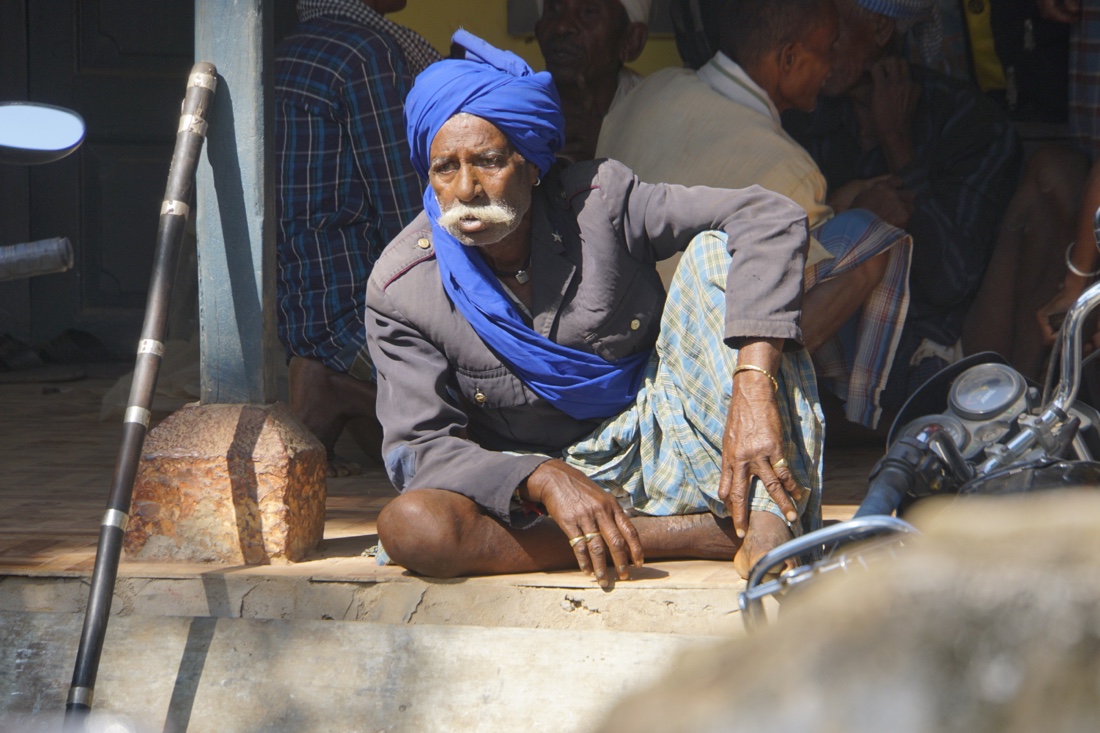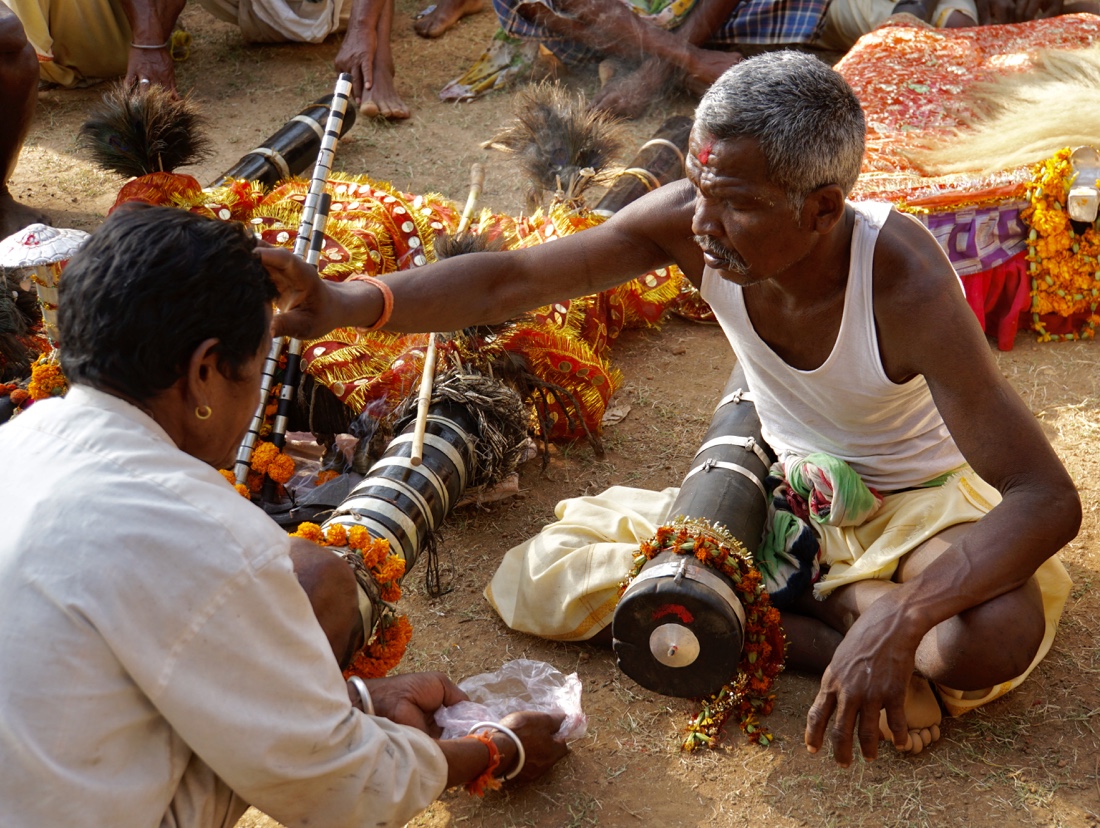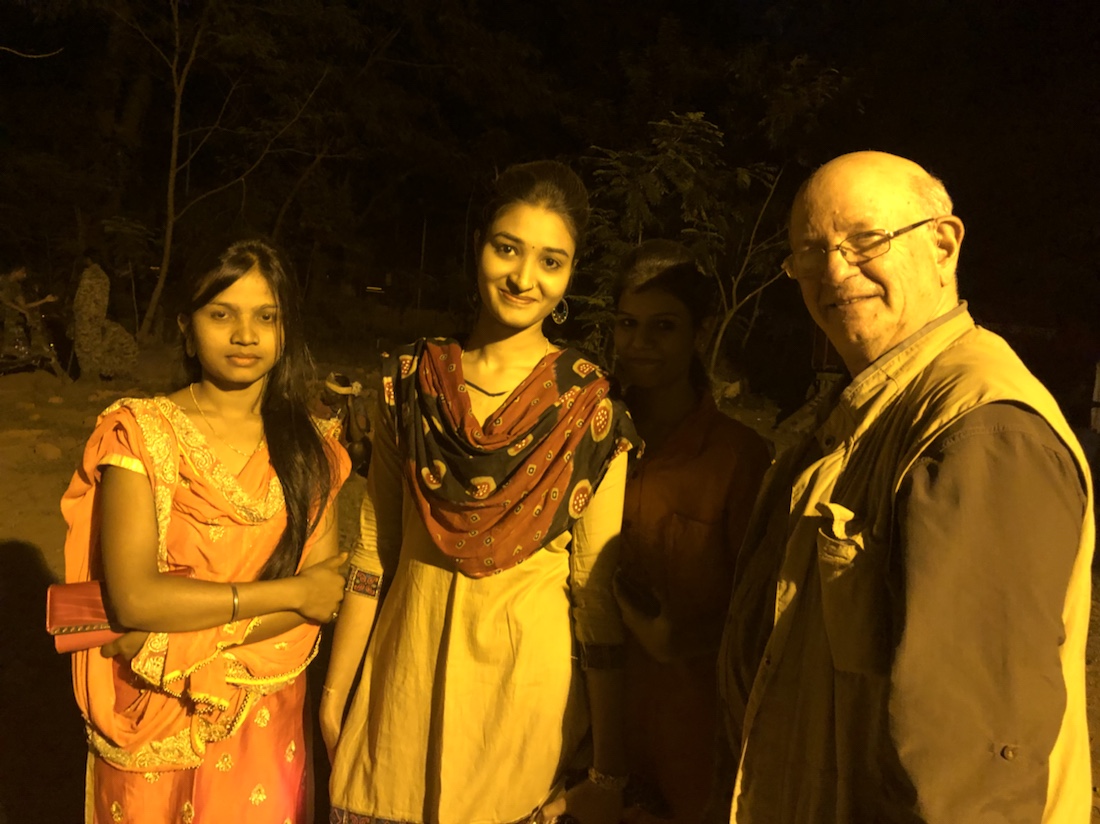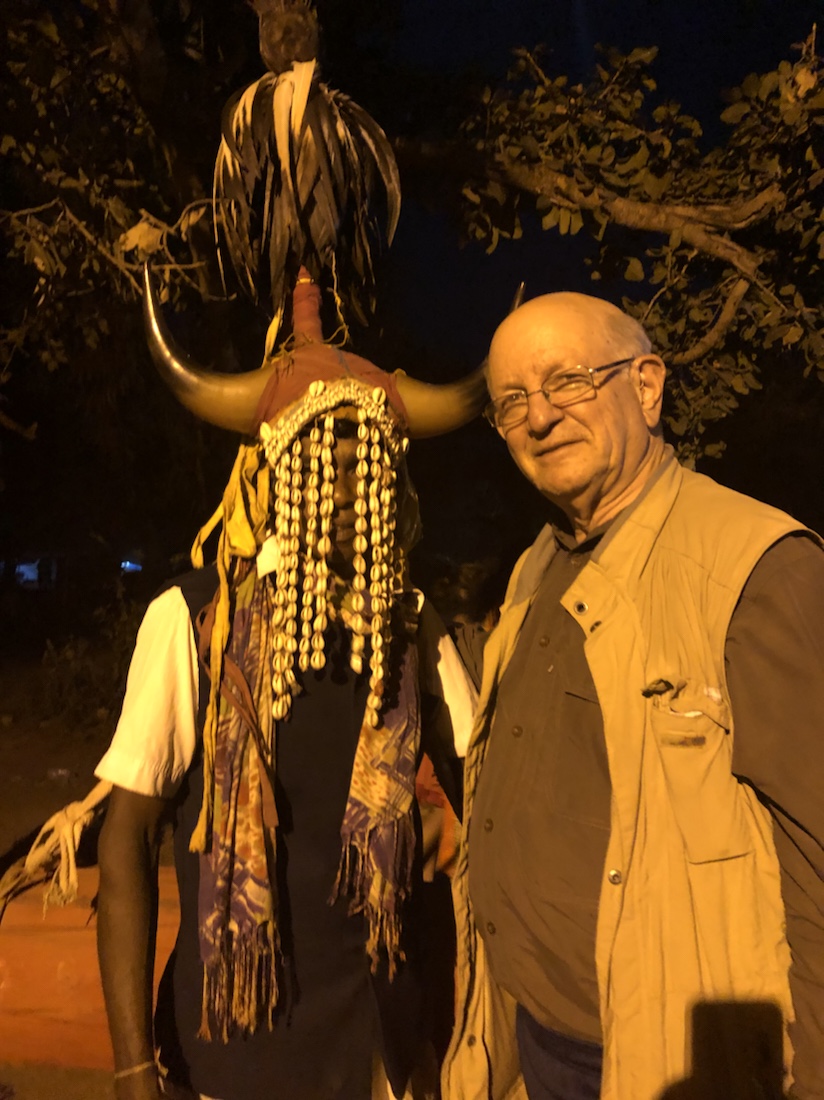October 20, 2018.
I contacted Shonali to ask her to change my schedule so that I could stay another day in Jagdalpur to witness the end of the festival, the return of the stolen chariot by the king. Prashant, who was to have been my guide today in Orissa, was informed of the change too late, so he shows up at the hotel, and joins us for the day.
After breakfast, we drive back to the palace ground and get a good taste and flavor of people living there for the festival, intermingling with the gods who have been brought there. 










 Jaspreet has suggested that, instead of having another omelette at the hotel, we get a South Indian breakfast in Jagdalpur. This is an excellent idea, as Jaspreet ordered me a variety of dishes, all of which were tasty, and a whole lot better than what I’d have had at the hotel.
Jaspreet has suggested that, instead of having another omelette at the hotel, we get a South Indian breakfast in Jagdalpur. This is an excellent idea, as Jaspreet ordered me a variety of dishes, all of which were tasty, and a whole lot better than what I’d have had at the hotel.
After the breakfast, we go to another area where people who have come in for the festival have been provided space by the government.
Back to the hotel to rest, blog and lunch, before heading back out to see the chariot returned. We wander around and observe what’s going on, as tribes from all over the area appear. We see the Bison-horned Maria tribe line up and march to the chariot area.

When the festival begins in earnest, the tribes carry in their gods, four people typically carrying two decorated logs with something on top. The tribes are animist, so there are no idols or figures. Some of the gods are long, spear-like polls carried by a single person.
The procession of gods is totally wild. The carriers spin around and around, often going into the crowd. It’s a miracle (or maybe the work of the gods) that people are not seriously injured. Some people, possessed, jerk around wildly, or roll on the ground The crowd is intensely engaged. After the gods have all arrived, the king rides in to cheers on his beautiful, expensive new horse. Once again, we make eye contact, and he waves. The king disappears into a tent to say prayers and have a meal of the first harvests. After the meal, he will escort the goddess to the chariot, and the chariot and goddess will return to the palace.








After the arrival of the king, the crowd drifts back to the chariot. But there’s a problem. One of the chariot wheels has broken and needs to be replaced. We mill about. The honor guard wants to have a picture with me (not really, I suggested it).
Many, many in the crowd ask to have their pictures taken with me. Since I’ve been taking thousands of photos of Indians, it seems only fair that I reciprocate, so I do.


 Jaspreet has a six-hour drive home, so he takes off with Tinku at 5PM, leaving me with Prashant and our driver, Dilip. After waiting a couple hours for the king, and despite assurances that the chariot will soon be repaired (evidently, AAA does not do chariot repair in the Bastar region), I decide that only the gods knew when this show would be back on the road again, so I tell Prashant that I’m ready to pack it in and head back to the hotel, which we do.
Jaspreet has a six-hour drive home, so he takes off with Tinku at 5PM, leaving me with Prashant and our driver, Dilip. After waiting a couple hours for the king, and despite assurances that the chariot will soon be repaired (evidently, AAA does not do chariot repair in the Bastar region), I decide that only the gods knew when this show would be back on the road again, so I tell Prashant that I’m ready to pack it in and head back to the hotel, which we do.
Dinner, blogging and to bed.

Arnie – your photographs are visually stunning and powerfully “in the moment.” The photos, together with the commentary, give readers of your blog an incredible sense of what you are experiencing. There is also a very strong sense that you are photographing a life and culture that must be rapidly vanishing. Thanks for sharing your experience of it with us before it changes forever.
I agree with Jan’s comments. You are very lucky to be seeing something like this that will surely vanish. I am always in awe of people from India and Indonesia in how they celebrate life, gods, the earth, creatures, etc. almost daily. They have made it a part of their lives. Loving your trip and thanks for sharing.